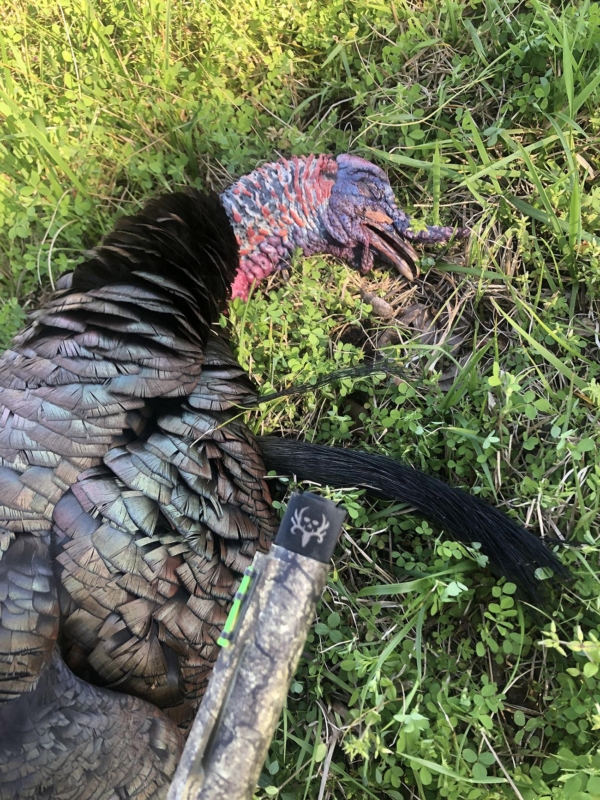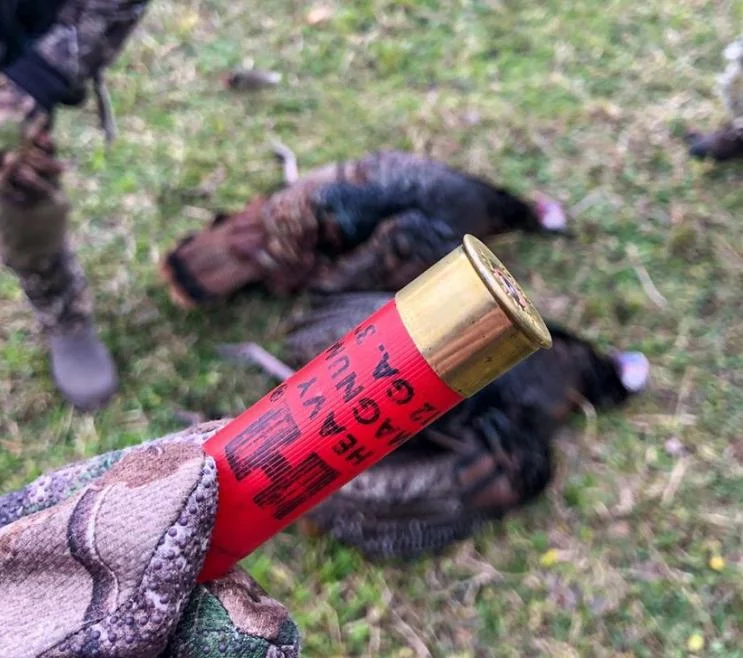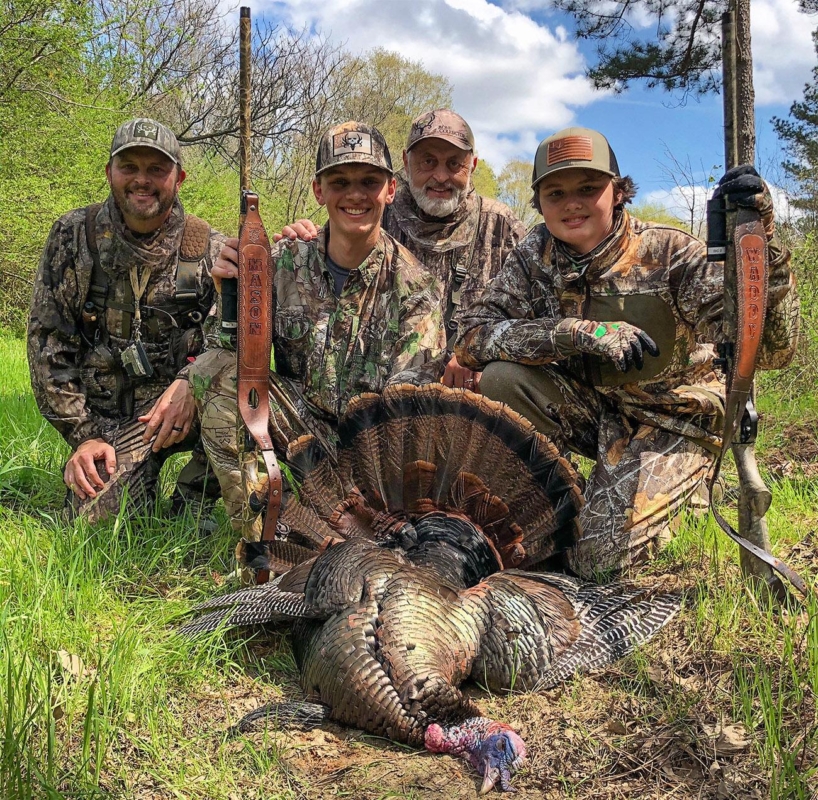The Easiest Method of Turkey Shotgun Patterning
With turkey hunting season coming up fast, now is the time to be checking your turkey shotgun pattern. Many people neglect to take this step, but it’s critical to know how your specific shotgun, choke, and ammo load will perform before you’re looking at a turkey in the field. Otherwise, your pattern might be too loose to be lethal past a certain distance. Here’s one of the easiest methods of turkey shotgun patterning you will find.
Goals of Turkey Shotgun Patterning
The basic thing you want to figure out with your turkey gun setup when patterning a shotgun is how your ammo load is distributed downrange. This is important to know because a turkey’s vital area (head and neck) is pretty small. If the pellets are spread too far apart at a certain distance, the chance of enough pellets actually hitting something vital on a turkey gets smaller. But if the pellets are closely patterned together, there is a very good chance that multiple pellets will strike something critical, such as the brain or spine. Your goal is to find out what combination of choke and ammunition (for your specific shotgun) will produce that ideal pellet density, and at what distance that pattern falls apart.
While you pattern your gun, it’s also a good time to test out your Tactacam POV angles and practice turning it on and off while shooting. Just another way to be comfortable with your equipment before you hit the woods.
Things to Keep In Mind
There are a few factors that will affect your turkey pattern that you should be aware of before you start. If you’ve been hunting for a while, these might not come as a surprise. But many new turkey hunters are unaware of how these affect your shots.

- Turkey Chokes – One of the most essential parts of your turkey hunting gear is a shotgun choke. Your choice of choke has a big effect on how your ammunition patterns. The tighter the choke, the more your pattern is constricted, which means you can shoot further downrange. For example, shooting an improved cylinder choke will produce a looser pattern than a full or specialty turkey choke at the same distance. You want to find one that produces the right pattern for your specific situation.
- Turkey Ammunition – The ammo you use can also make a large difference on your turkey shotgun patterning. Using smaller pellets (e.g., size 6 shot) means there are more pellets going downrange – think of it as “filling in” your pattern. But larger pellets (e.g., size 4 shot) take up more space, so there are fewer pellets. The material of your shot also plays into this. You can generally get away with smaller pellets if you have a very dense material, such as tungsten, vs. traditional lead. You can also find boxes of mixed loads, such as size 5, 6, and 7, which offers the pattern density you want from smaller pellets with the knockdown power of larger pellets. Hornady® has some great shotgun ammunition for turkey hunting.
- Distance – It’s important to know your maximum lethal distance when turkey hunting, especially when a wary tom is hanging out at 45 yards and you’re questioning your shot. Obviously, your shotgun pattern will be tighter and fuller the closer you are to your target, and it will spread out as you get further away.

Turkey Shotgun Patterning Method
One of the first things you should do when patterning your turkey shotgun is protect your ears and eyes, which many hunters neglect to do. Trying multiple and different loads is the name of the game with turkey shotgun patterning, which could permanently damage your senses. Safety glasses are always a good idea when you’re shooting. Likewise, earplugs or muffs will keep your ears safe, because even one shot without ear protection can cause damage to your hearing. Don’t permanently sacrifice your hearing or vision just for pride.
Next, find a good shooting range with a solid rest available if possible. If you can use a sled or gun vise, that’ll help stabilize your shotgun and improve your accuracy by removing your influence (e.g., any breathing or shaking-related movement). If that’s not an option, you might have a sore shoulder by the time you’re done. After all, you may have to shoot several shells and turkey loads can kick! You will also need at least a dozen turkey targets – many of which are made with high-viz paint underneath the vital spots so you can quickly see how many lethal pellets your pattern produced. Bring a sharpie too so you can write the yardage/distance on the target, the choke, and the load. That will help later on to figure out the best for each situation.

Start with a target placed about 30 yards away, which you should have no problem hitting. Pick a given choke (a full or tighter choke is a good starting place) and ammo choice and start your turkey shotgun patterning exercise. Aim for the head and neck as usual, and then retrieve your target to count the pellets. Within a 10-inch circle around the densest part of the pattern, you should be able to count 100 pellets, which is plenty enough to include several lethal ones given the size of a turkey’s head and neck. You may want to repeat a few shots to make sure it’s accurate, but when you feel like it’s on target, shoot further out. 40 yards is the typical shot distance for most turkey hunting scenarios, and so many turkey hunters start at this distance. When your pellet count drops below 100 within the 10-inch circle, you have found your maximum shooting range. Then it’s a matter of switching your choke or ammo out and repeating the process until you find a combination you like.
Turkey Shotgun Accuracy
While most shotguns are pointed at upland game birds rather than aimed, you need to reverse this for turkeys. Accuracy really matters, so you need to aim precisely. For example, if you have a turkey shotgun patterning tight at 50 yards, and you take a shot at a bird at only 10 yards, you’re now shooting a super tight pattern at that distance. As such, any deviation left, right, up, or down could mean a drastic reduction in the number of pellets hitting the bird. This is why it’s important to test different distances and maybe include some upgrades to your turkey shotgun. When you usually only rely on the open bead sights, it can be tough to remain accurate out past 30 yards. If you expect longer-range shots to be the norm for your area, consider adding a Bushnell® red dot sight or shotgun scope. These optics systems will help you be much more precise at further distances.


